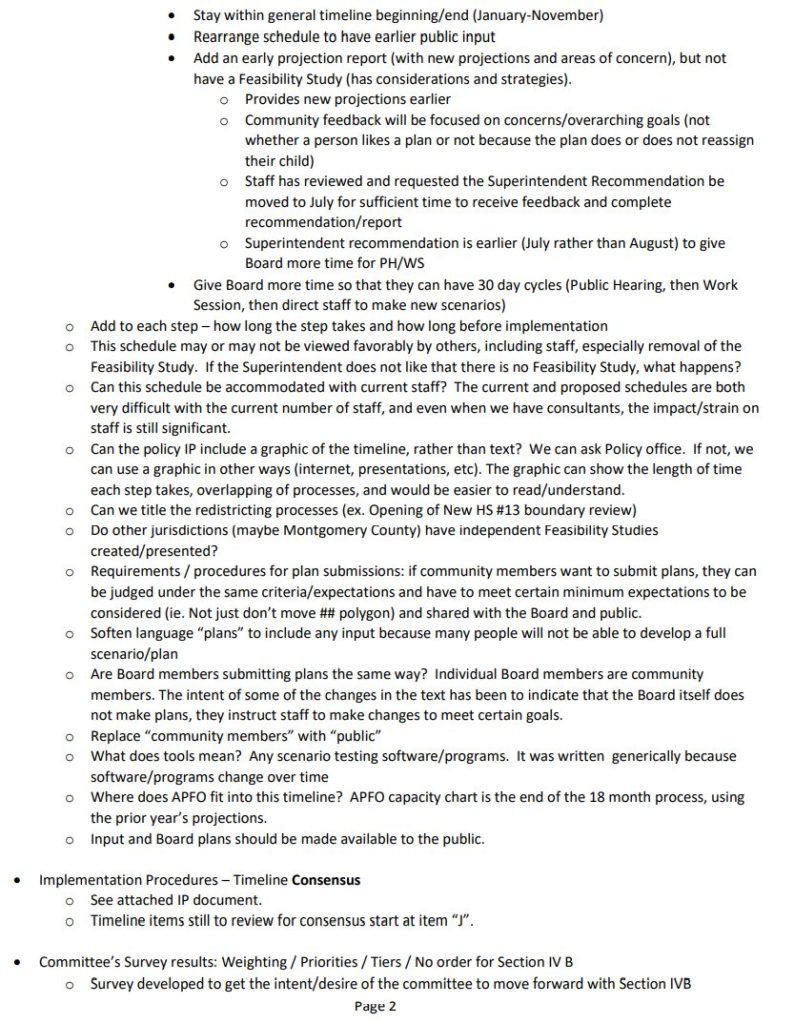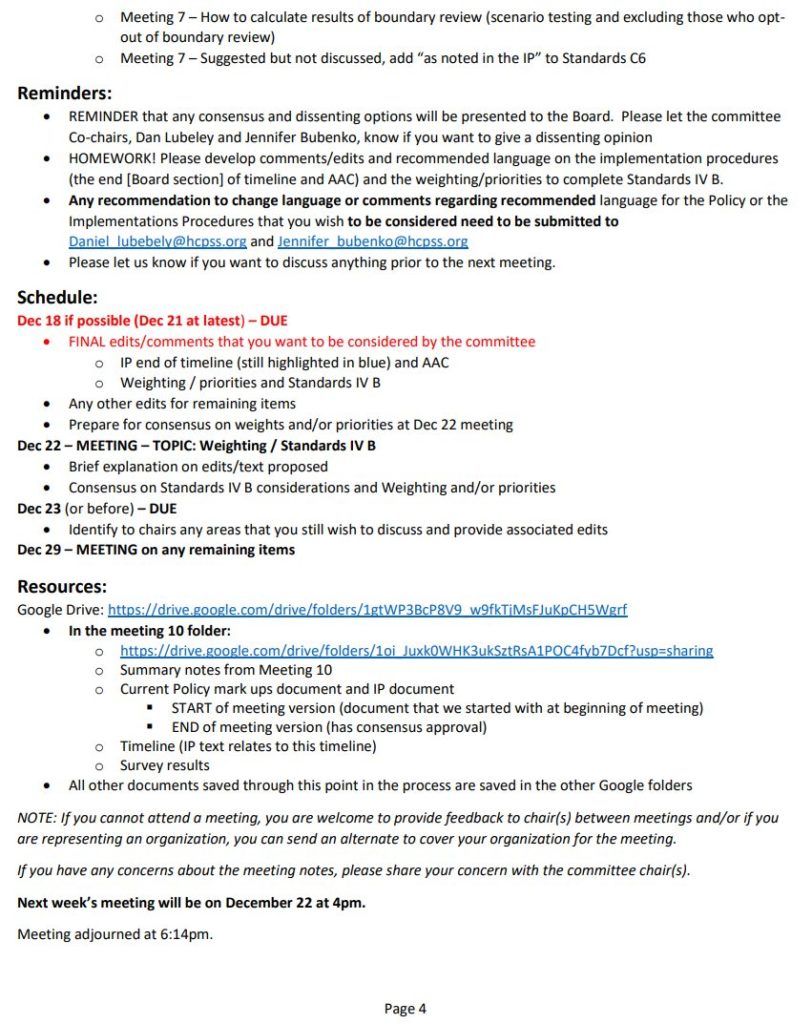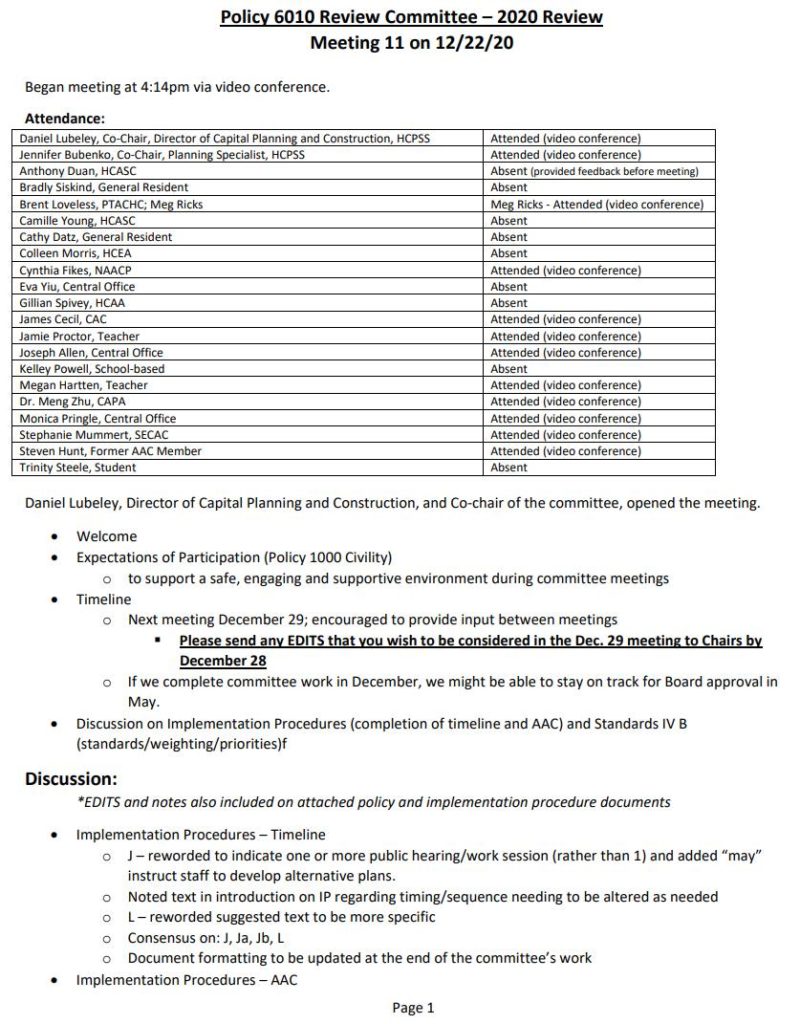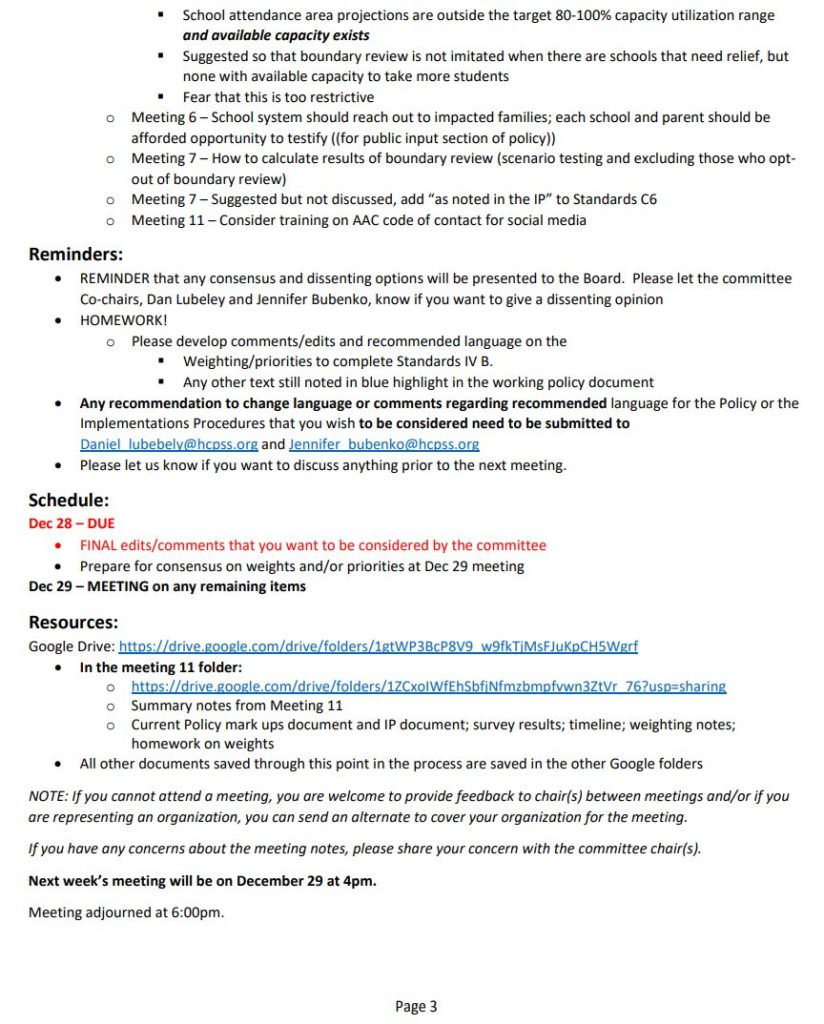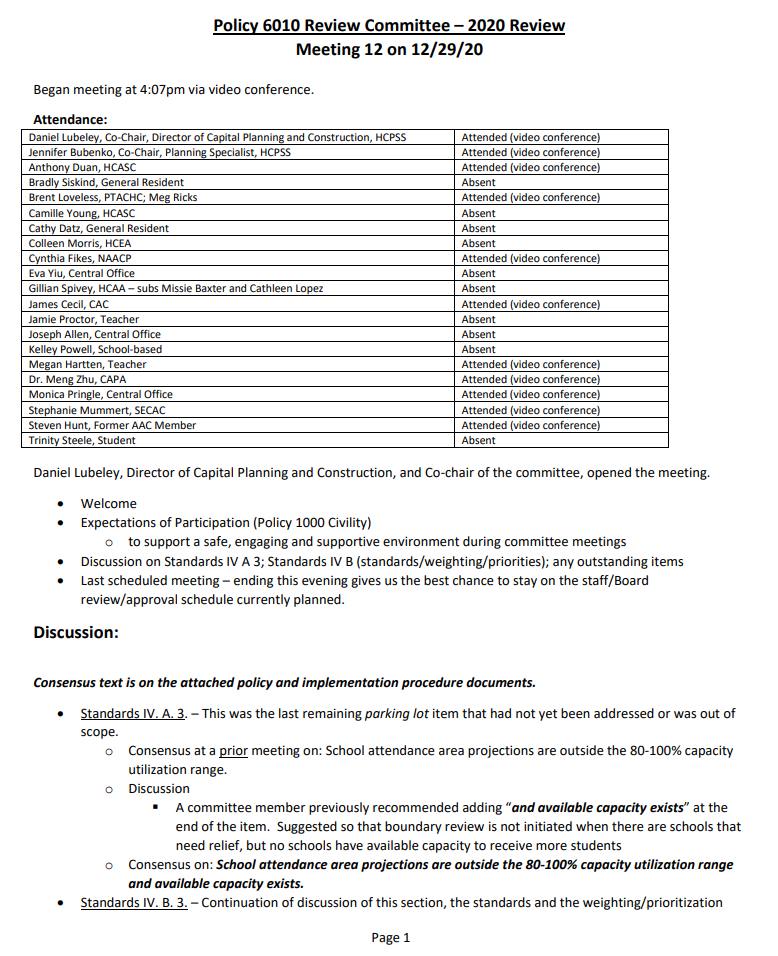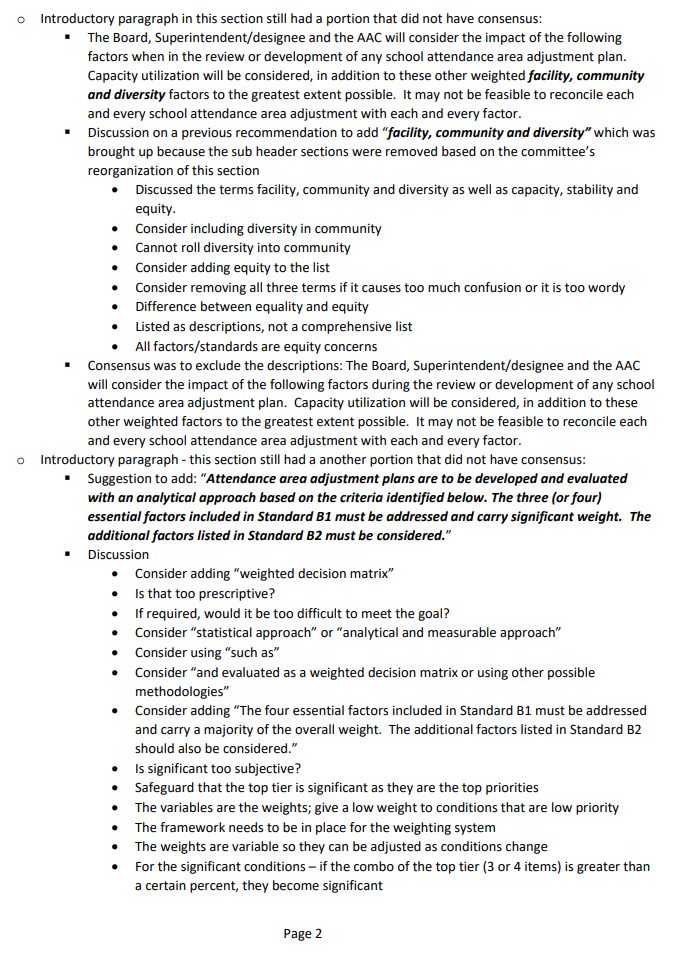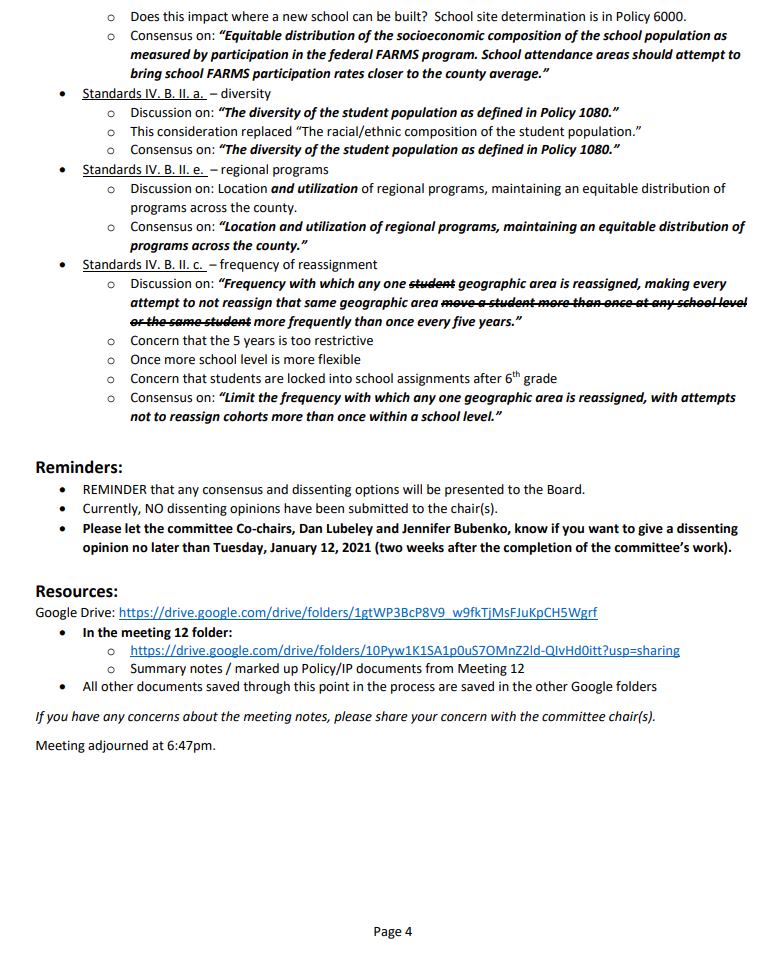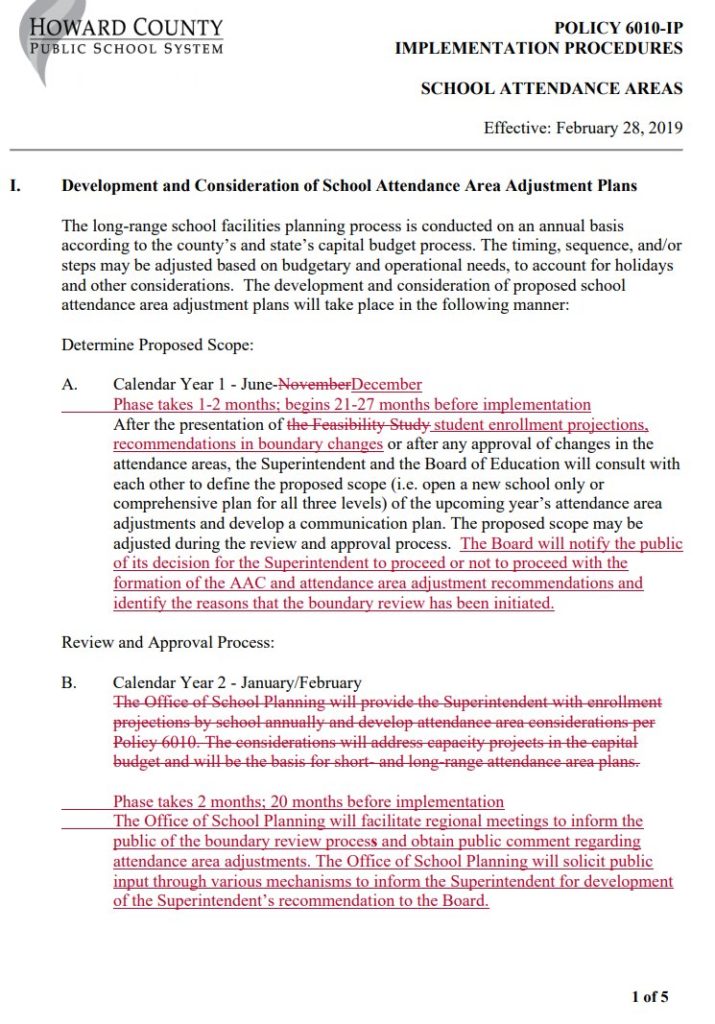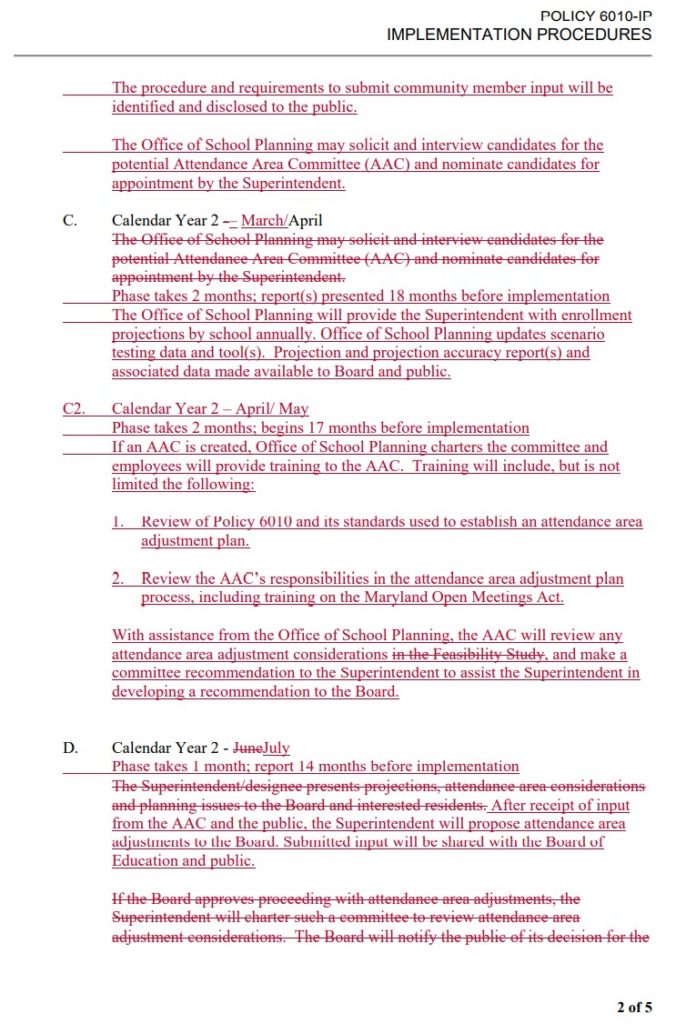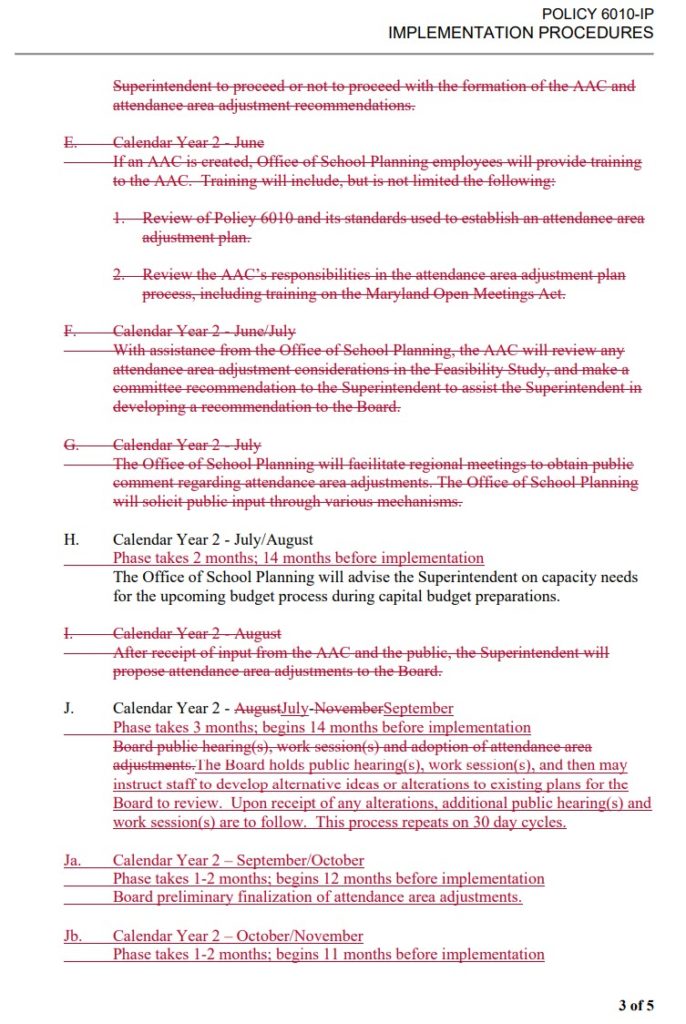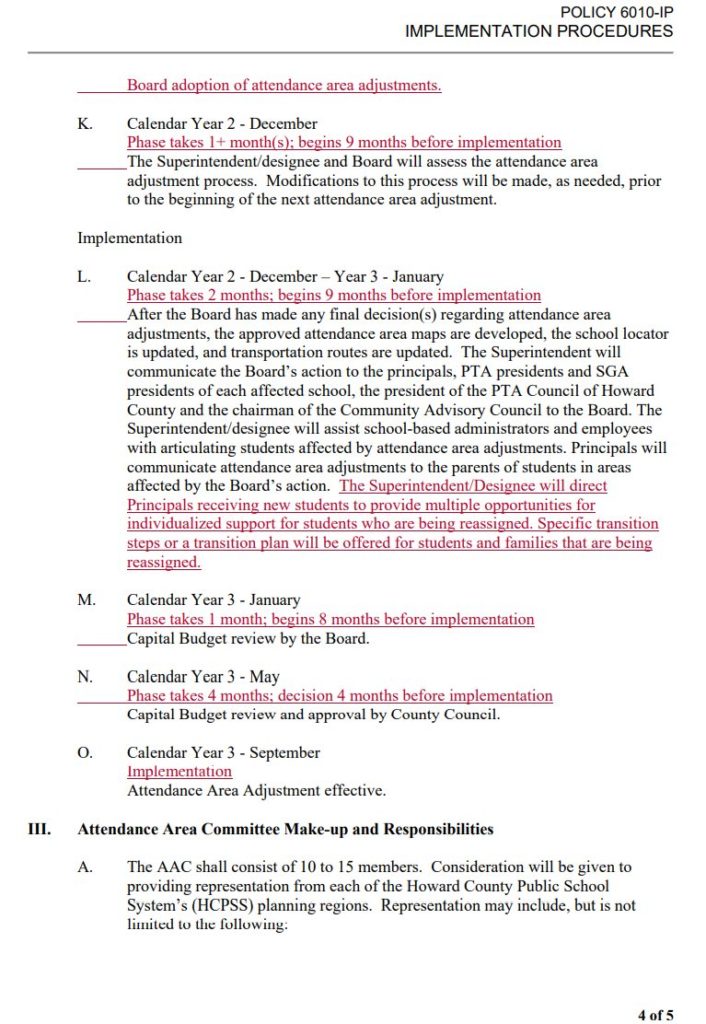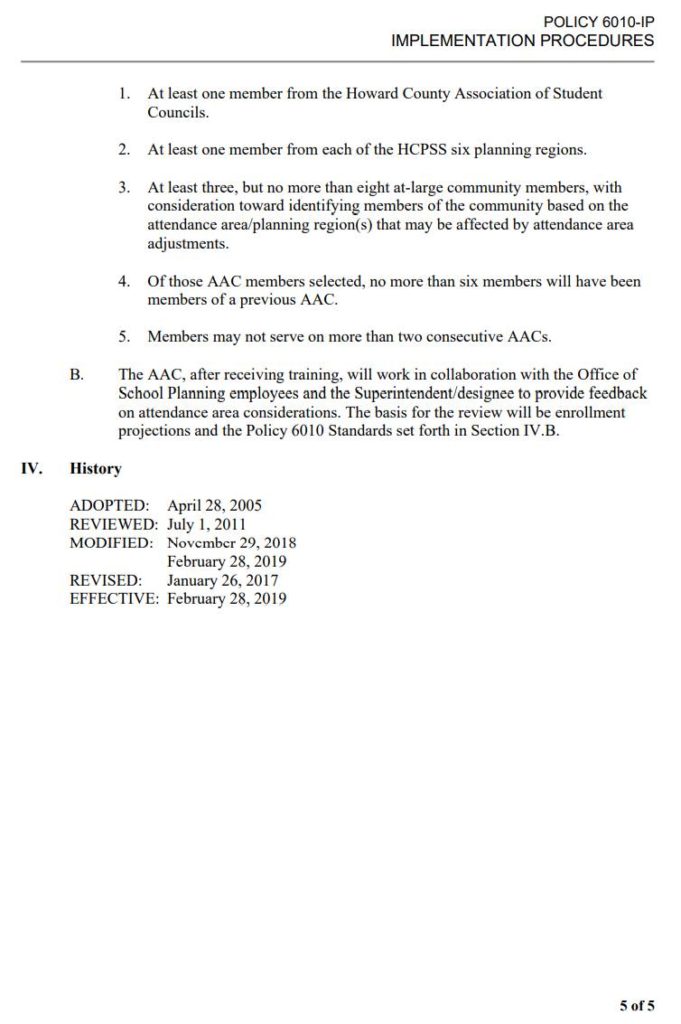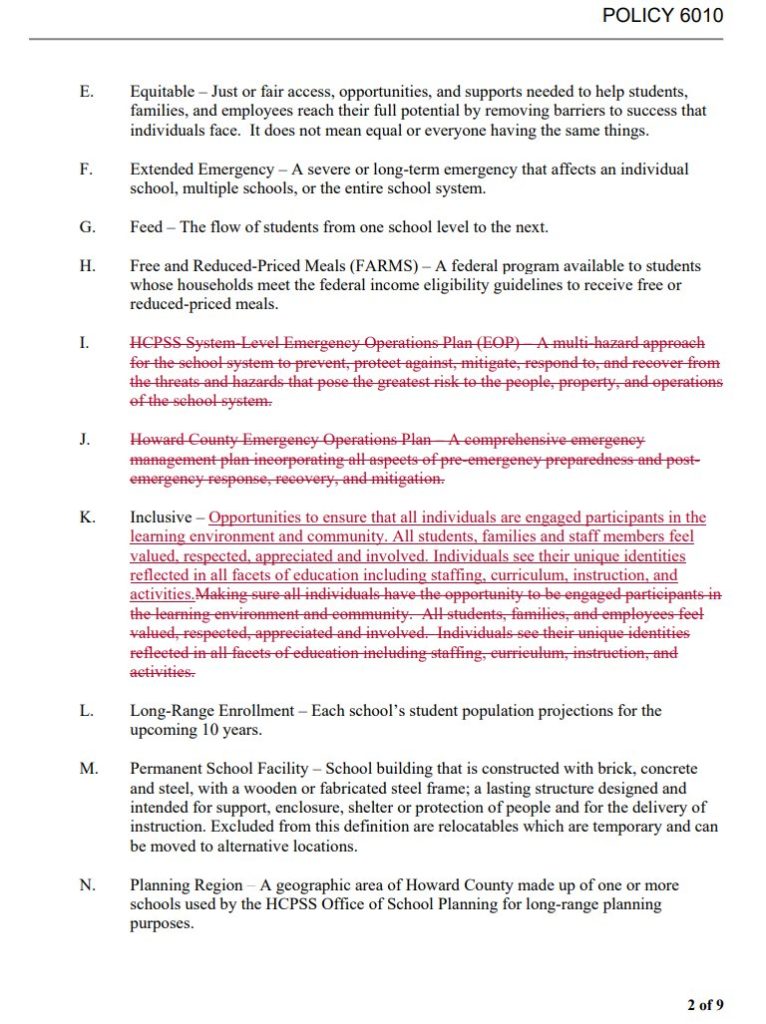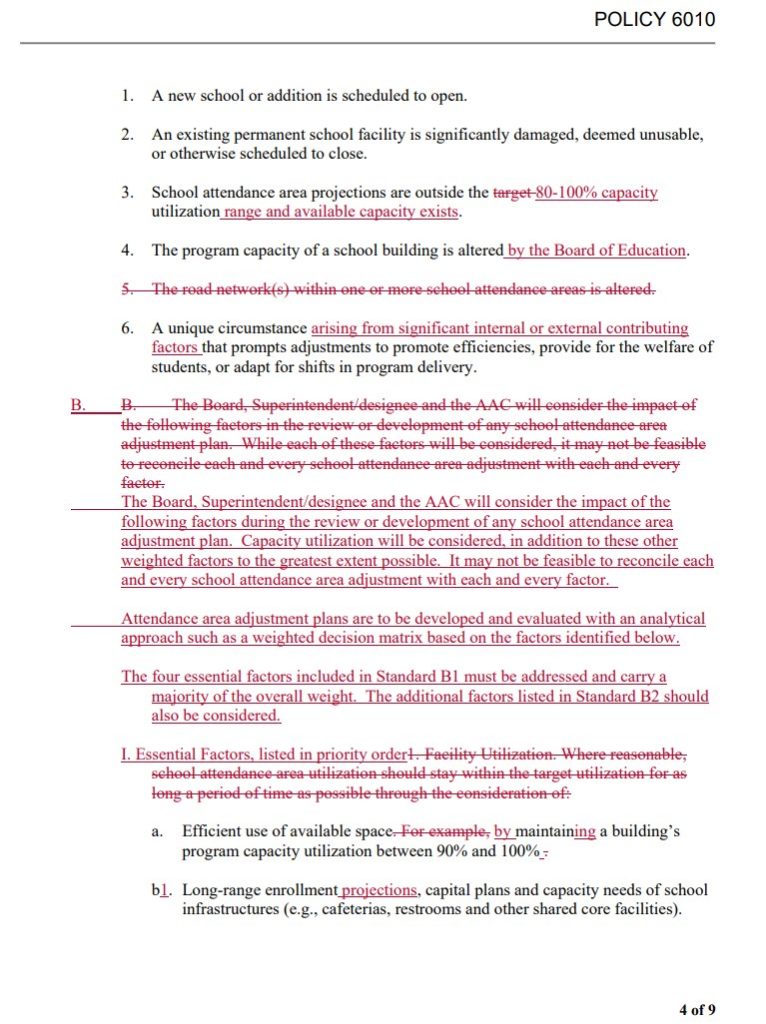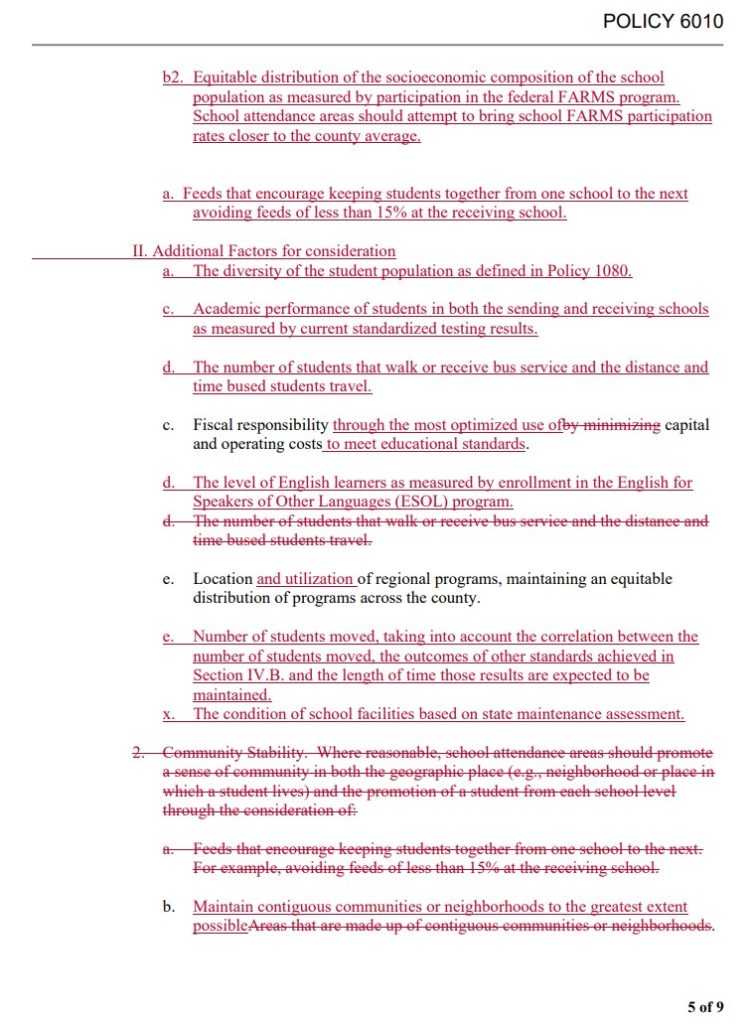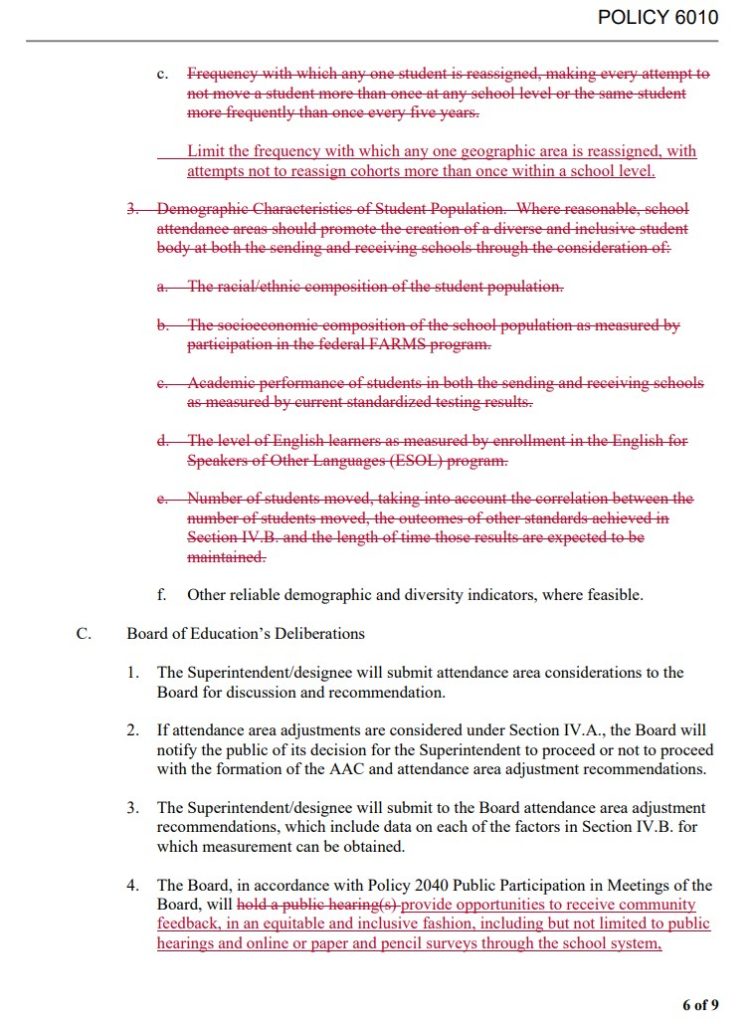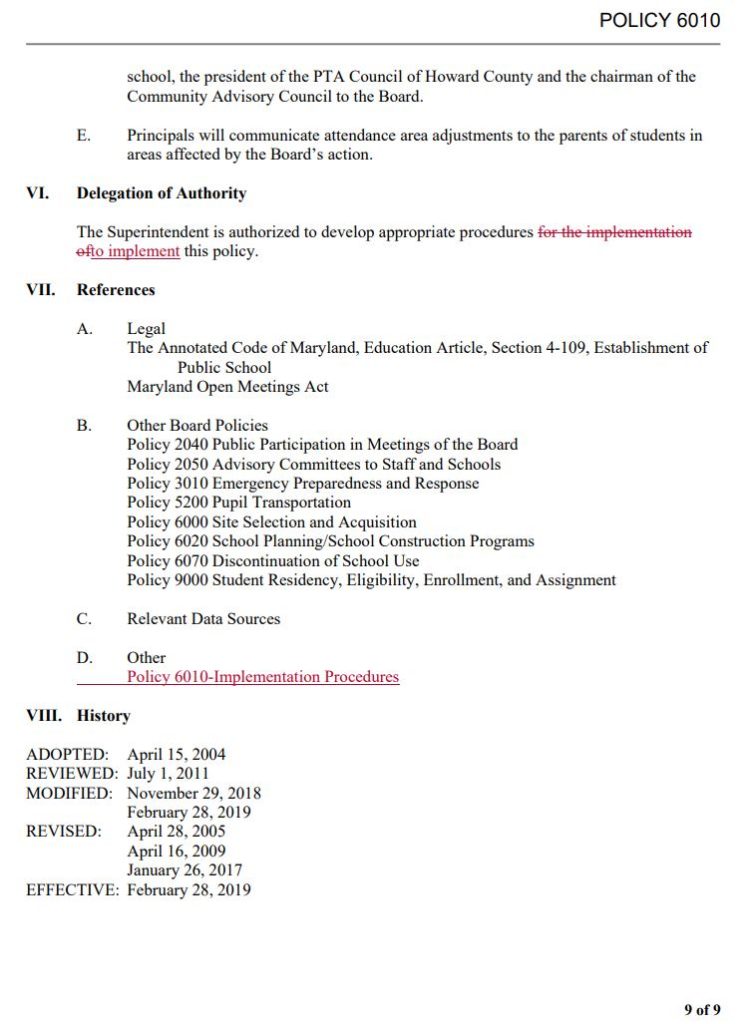Tuesday • March 16, 2021
Policy 6010 (Redistricting) Committee Recommendations
By Steven Keller
Policy 6010 “defines the conditions and process by which school attendance area adjustments [i.e. redistricting] will be developed and adopted.” A public committee was formed in Fall 2020 to recommend changes to this policy.
Summarized in this post are the major recommended changes to this policy that were sent to Superintendent Martirano by this committee in January 2021. Also included are the Meeting Summary Notes for the Policy 6010 committee meetings held on December 15, 22, and 29 (2020), as well as the complete final proposed Policy 6010 “Policy Statement” and “Implementation Procedure” drafts that were sent by the committee to Superintendent Martirano, for recommendation to the Board. The current (old) Policy 6010 can be found here.
All HCPSS stakeholders are encouraged to read the summary of changes in this post and to review all of the provided meeting notes from the December 15, 22, and 29 meetings (screenshots provided). Examine the committee commentary and how consensus was achieved on policy changes, note when specific policy changes were made and examine which committee members were in attendance or absent during the meetings when each major policy change was made. Doing so will give a complete picture of how this final draft policy recommendation was developed.
Important Upfront Caveat: These are only *recommended* policy changes sent by the public committee to Superintendent Martirano. The new policy is still a work in progress and will not be “law of the land” until officially proposed to the Board by Superintendent Martirano in April/May 2021 and then formally approved by the Board in May/June 2021.
UPFRONT SUMMARY OF MAJOR PROPOSED POLICY CHANGES:
-
Socioeconomic-based redistricting (Free and Reduce Meal (FARM) student percentage re-balancing via ‘bussing’) is established as an “Essential Factor” that must be addressed and included as 3rd most important weighted factor during area attendance adjustments
-
New 30-day cyclic/iterative Board redistricting plan development process is proposed
-
Redistricting must be considered by the Board “when school attendance area projections are outside the target 80-100% capacity utilization range” (i.e. every year for the foreseeable future)
-
3rd Party Feasibility Study is eliminated, replaced by HCPSS-developed “Early projection report”
-
The Board may consider [but is not required to provide] exemptions for “students who have been reassigned once already at their school level or once within the last five years” and “students who are on an IEP or 504 plan.”
Upfront observation/concern: Inclusion of socioeconomic-based redistricting (“bussing”) as an “Essential Factor” that ” must be addressed and carry a majority of the overall weight” first appeared in the very last Policy 6010 draft developed during the final committee meeting over the holiday break, when schools were closed, on December 29, 2020, when only 11 out of 21 committee members (52%) were in attendance. This requirement that “school attendance areas should attempt to bring school FARMS participation rates closer to the county average” is ranked #3 in importance, ahead of Feed optimization (“avoiding feeds of less than 15% at the receiving school.”) and just behind capacity utilization (#1), and long-range enrollment, capital plans, and infrastructure needs (#2).
This proposed change institutionalizes the controversial “bussing” approach that Superintendent Martirano took towards redistricting during Fall 2019, which many thousands of HCPSS stakeholders strongly opposed. There were thousands of hours of testimony given & letters and reports written that detailed why this socioeconomic based redistricting approach was harmful to all HCPSS students and should never be used as a major factor again.
Below are the major proposed changes to Policy 6010, as provided by the Policy 6010 committee:
IMPLEMENTATION PROCEDURES
The following are the major proposed changes to the 6010 Implementation Procedures:
-
Elimination of 3rd party Feasibility Study. Replace with internally-developed “Early projection report” presented to the Superintendent in March/April by the HCPSS Office of School Planning
-
Start plan development process earlier (Superintendent’s plan presented to the Board in July versus August)
-
Board of Education redistricting plan revision/development process has been changed.
Old Process:
-
Superintendent presents redistricting plan to the Board
-
Public hearings are held by the Board until all interested community members have shared their thoughts and concerns
-
The Board then conducts work sessions to refine and finalize the plan
-
The Board approves final plan with vote
New Proposed Process:
1. Superintendent presents redistricting plan to the Board.
[New 30-day Cyclic Process between July and September]
2. Single public hearing is held on current state of the plan
3. The BoE conducts single work session to instruct staff on potential plan alterations
4. Staff implements alterations, if necessary
[30-day cycle repeats steps 2-4 if any plan alterations have been made]
5. After completion of iterative cycle, Board approves final plan with vote.
POLICY STATEMENT (REDISTRICTING CONDITIONS, FACTORS ETC.)
The following are the major proposed changes to the 6010 Policy Statement:
-
The conditions for considering a redistricting have been changed. New definition effectively requires redistricting to be considered every year.
Old Policy 6010 Section IV. A.: “The Board will consider school attendance area adjustments whenever….school attendance area adjustments are outside the target utilization.”
(“target utilization” left undefined.)
New Proposed Policy 6010 Section IV. A.: “The Board will consider school attendance area adjustments whenever…school attendance area projections are outside the target 80-100% capacity utilization range and available capacity exists.”
(unless/until many new schools are built, there will *always* be many schools above 80-100% capacity utilization)
-
The consideration of factors during the redistricting process have been significantly changed. “Attendance area adjustment plans are to be developed and evaluated with an analytical approach such as a weighted decision matrix based on the factors identified”.
-
New “Essential Factors” are established that ” must be addressed and carry a majority of the overall weight“. The “Essential Factors” are listed in priority order, which will impact the weight assigned to that factor.
Old Policy 6010 Section IV. B.: “The Board, Superintendent/Designee and the AAC will consider the impact of the following factors in the review or development of any school attendance area adjustment plan. While each of these factors will be considered, it may not be feasible to reconcile each and every school attendance area adjustment with each and every factor.
1) Facility Utilization. Where reasonable, school attendance area utilization should stay within the target utilization for as long a period of time as possible through the consideration of:
a. Efficient use of available space. For example, maintain a building’s program capacity utilization between 90% and 100%.
b. Long-range enrollment, capital plans and capacity needs of school infrastructures (e.g., cafeterias, restrooms and other shared core facilities).
c. Fiscal responsibility by minimizing capital and operating costs.
d. The number of students that walk or receive bus service and the distance and time bused students travel.
e. Location of regional programs, maintaining an equitable distribution of programs across the county.
2) Community Stability. Where reasonable, school attendance areas should promote a sense of community in both the geographic place (e.g., neighborhood or place in which a student lives) and the promotion of a student from each school level through the consideration of:
a. Feeds that encourage keeping students together from one school to the next. For example, avoiding feeds of less than 15% at the receiving school.
b. Areas that are made up of contiguous communities or neighborhoods.
c. Frequency with which any one student is reassigned, making every attempt to not move a student more than once at any school level or the same student more frequently than once every five years.
3) Demographic Characteristics of Student Population. Where reasonable, school attendance areas should promote the creation of a diverse and inclusive student body at both the sending and receiving schools through the consideration of:
a. The racial/ethnic composition of the student population.
b. The socioeconomic composition of the school population as measured by participation in the federal FARMS program.
c. Academic performance of students in both the sending and receiving schools as measured by current standardized testing results.
d. The level of English learners as measured by enrollment in the English for Speakers of Other Languages (ESOL) program.
e. Number of students moved, taking into account the correlation between the number of students moved, the outcomes of other standards achieved in Section IV.B. and the length of time those results are expected to be maintained.
f. Other reliable demographic and diversity indicators, where feasible.”
New Proposed Policy 6010 Section IV. B.: “The Board, Superintendent/designee and the AAC will consider the impact of the following factors during the review or development of any school attendance area adjustment plan. Capacity utilization will be considered, in addition to these other weighted factors to the greatest extent possible. It may not be feasible to reconcile each and every school attendance area adjustment with each and every factor.
Attendance area adjustment plans are to be developed and evaluated with an analytical approach such as a weighted decision matrix based on the factors identified below.
The four essential factors included in Standard B1 must be addressed and carry a majority of the overall weight. The additional factors listed in Standard B2 should also be considered.
I. Essential Factors, listed in priority order
a. Efficient use of available space. For example, by maintaining a building’s program capacity utilization between 90% and 100% .
b. Long-range enrollment projections, capital plans and capacity needs of school infrastructures (e.g., cafeterias, restrooms and other shared core facilities).
c. Equitable distribution of the socioeconomic composition of the school population as measured by participation in the federal FARMS program. School attendance areas should attempt to bring school FARMS participation rates closer to the county average.
d. Feeds that encourage keeping students together from one school to the next avoiding feeds of less than 15% at the receiving school.
II. Additional Factors for consideration
a. The diversity of the student population as defined in Policy 1080.
b. Academic performance of students in both the sending and receiving schools as measured by current standardized testing results.
c. The number of students that walk or receive bus service and the distance and time bused students travel.
d. Fiscal responsibility through the most optimized use of capital and operating costs to meet educational standards.
e. The level of English learners as measured by enrollment in the English for Speakers of Other Languages (ESOL) program.
f. Location and utilization of regional programs, maintaining an equitable distribution of programs across the county.
g. Number of students moved, taking into account the correlation between the number of students moved, the outcomes of other standards achieved in Section IV.B. and the length of time those results are expected to be maintained.
h. The condition of school facilities based on state maintenance assessment.
i. Maintain contiguous communities or neighborhoods to the greatest extent possible
j. Limit the frequency with which any one geographic area is reassigned, with
attempts not to reassign cohorts more than once within a school level.
k. Other reliable demographic and diversity indicators, where feasible”
Old Policy 6010 Section IV. C.6.: “The Board may consider exemptions for rising fifth, eighth, and eleventh grade students to continue attending schools in an area that is proposed for attendance area adjustments. Attendance area adjustments will not affect rising twelfth grade students.”
New Proposed Policy 6010 Section IV. C.6.: “Attendance area adjustments will not affect rising twelfth grade students. The Board may consider exemptions for students to continue attending schools in an area that is proposed for attendance area adjustments if they are:
a. rising fifth, eighth, and eleventh grade students to continue attending schools in an area that is proposed for attendance area adjustments. Attendance area adjustments will not affect rising twelfth grade students.
b. students who have been reassigned once already at their school level or once within the last five years provided that they remained registered at the same address during that time.
c. students who are on an IEP or 504 plan.”
Old Policy 6010 Section V. C.: “All AAC meetings are subject to the Maryland Open Meetings Act. Staff will take summary notes of the AAC meeting and make these summary notes available to the public.”
New Proposed Policy 6010 Section V. C.: “The Superintendent/Designee will at the minimum take summary notes of the AAC meeting(s) and make these summary notes available to the public to align with requirements of the Maryland Open Meetings Act.”
Screenshots of significant meeting minutes & drafts from this committee are shown below:



